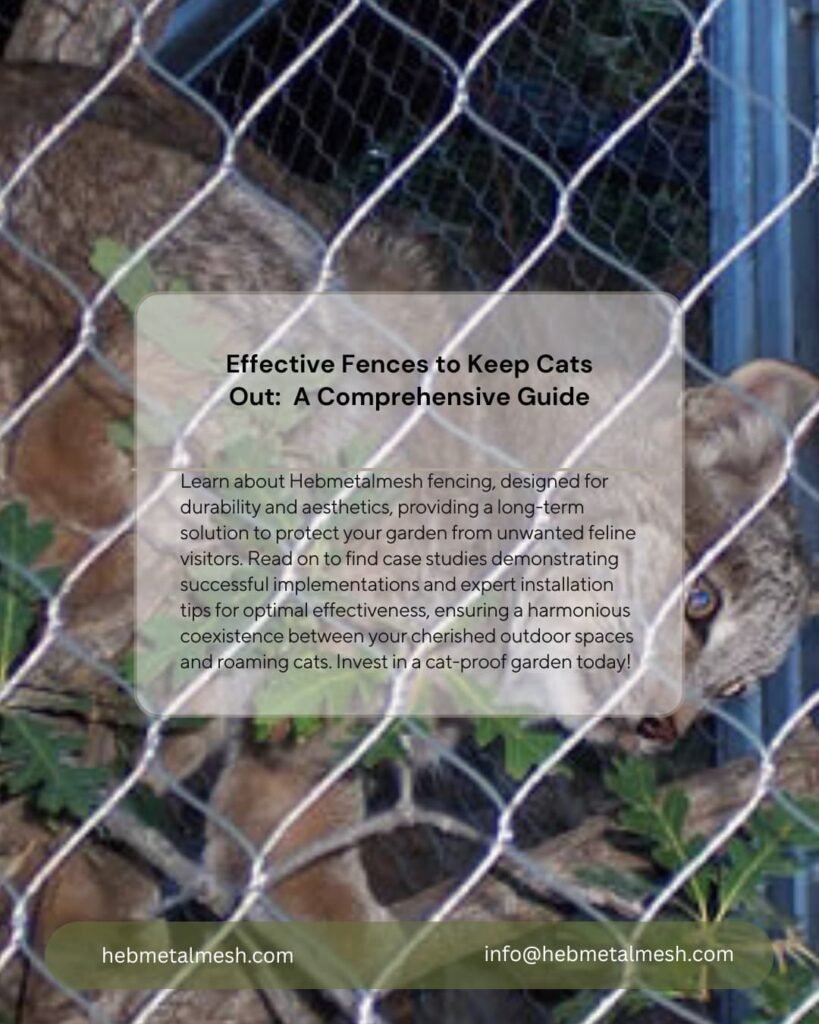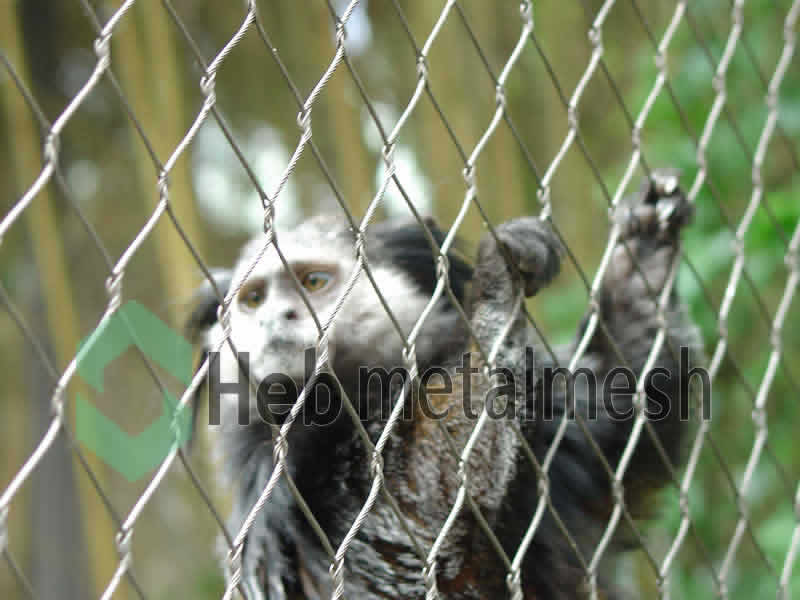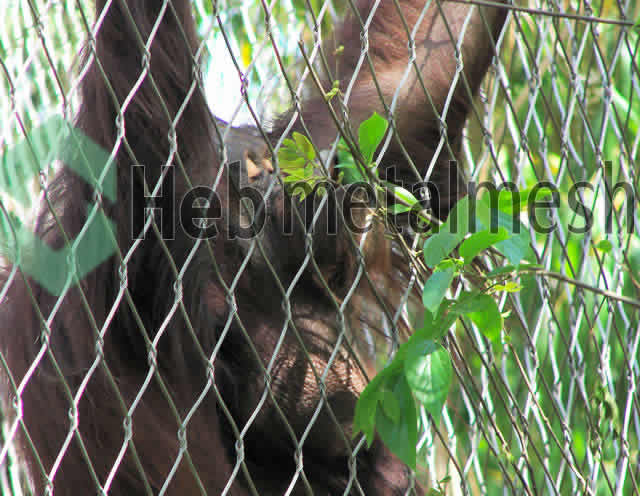Introduction
Cats are known for their curious nature and strong territorial instincts, which often lead them to venture beyond their own space. This exploratory behavior can result in unwanted visits to gardens, yards, and other properties. Understanding the underlying motivations that drive cats to roam can aid in implementing effective deterrent strategies, including the installation of fences to keep cats out of specific areas.
One of the primary factors leading cats to explore unfamiliar territory is their innate curiosity. Cats are naturally drawn to novel environments and scents, which they often perceive as opportunities for exploration and play. This instinct to investigate new surroundings can encourage them to stray into gardens, where they may disturb plants, dig in soil, or pose a potential threat to small animals residing within that space.
Additionally, territorial behavior plays a significant role. Cats are not only creatures of habit but also territorial animals. They feel a strong need to establish and defend their own space, which can sometimes result in conflicts with other cats. When a cat perceives an uncharted territory, such as a neighboring garden, they might venture into it to assert their dominance or to inspect what lies beyond their usual boundaries.
This open-minded approach to their environment emphasizes the importance of considering how barriers, such as fences, can be beneficial in curbing these wandering tendencies. Properly designed fences can serve as effective deterrents, preventing curious felines from entering areas where their presence is not desired. By recognizing these natural instincts and habits, homeowners can make informed decisions about implementing physical boundaries to safeguard their properties from cats, ensuring a harmonious coexistence between domestic pets and their surroundings.
Limitations of Traditional Solutions
When it comes to protecting gardens and outdoor spaces from feline intruders, many homeowners often resort to traditional methods such as sprays, sonic deterrents, and various natural remedies. While these solutions may offer temporary relief, their effectiveness can be limited and inconsistent over time. One of the drawbacks of sprays, for instance, is that their pungent aroma tends to dissipate quickly, requiring frequent reapplication to maintain efficacy. This can become not only a tedious task but also an additional expense for garden owners.
Sonic deterrents are another commonly used option. They emit high-frequency sounds that are designed to repel cats, but studies have shown mixed results. While some users notice a partial reduction in cat visits, others report little to no impact. The variability in individual cat behavior often renders these devices less reliable, leading to ongoing frustrations for property owners. Moreover, these devices can also disturb other wildlife, posing a concern for those seeking to foster a balanced ecosystem in their gardens.
Natural remedies often include the use of citrus peels or vinegar, which are said to deter cats due to their strong scents. However, effectiveness varies and, like sprays, these remedies require ongoing maintenance and replacement as they decompose or lose potency. Additionally, some natural solutions might have unintended consequences, such as attracting other animals or pests, which can complicate the situation. Overall, while traditional solutions can serve as starting points for managing feline intrusions, they frequently fall short of providing long-lasting, dependable protection. As such, exploring more robust options, such as physical barriers or fences to keep cats out, may ultimately prove to be more effective in safeguarding garden spaces.
Why Fencing is an Ideal Solution
When it comes to preventing unwanted feline visitors from entering your garden or property, installing effective fences to keep cats out offers numerous advantages that make it a preferred choice among homeowners and garden enthusiasts alike. One of the primary benefits of such fencing is its durability. Unlike other deterrents that may require regular maintenance or replacement, a well-constructed fence can last for many years, providing a long-term solution without the need for constant upkeep. High-quality materials such as vinyl, wood, aluminum, or wrought iron can withstand different weather conditions, ensuring that the barrier remains intact and functional.
Another critical aspect is the effectiveness of the fence in serving its intended purpose. A properly designed fence can create an impassable barrier for cats, deterring them from exploring your yard. This is particularly significant for those who cultivate gardens or maintain lush landscapes, as cats can damage plants and disturb the tranquility of outdoor spaces. Moreover, incorporating features such as overhangs or angled tops can further enhance the fence’s ability to keep cats out, making it more challenging for them to scale or jump over.
Aesthetic appeal also plays a role in why fences are a favored choice. Modern fencing solutions come in a variety of styles and colors, allowing homeowners to select a design that complements their property while simultaneously serving its practical purpose. This means that, while enhancing security and providing peace of mind, such fences can also elevate the overall appearance of the outdoor space. A well-designed fence creates not just a protective barrier but also a welcoming environment that reflects the homeowner’s style and gardening aspirations.
Introducing Hebmetalmesh Fencing
When it comes to effective solutions for keeping cats out, Hebmetalmesh has emerged as a leading brand in the fencing industry. Renowned for its commitment to quality and innovation, Hebmetalmesh offers specialized fencing products designed specifically to deter feline intrusions, thereby ensuring a secure environment for homeowners and their pets.
One of the standout features of Hebmetalmesh fencing is the use of high-quality materials that not only provide durability but also enhance the structure’s resilience against tampering. The fencing is crafted from robust metal mesh that is difficult for cats to scale or claw at, making it an ideal choice for cat owners concerned about preventing unwanted intrusions. Additionally, the design elements of Hebmetalmesh products take into consideration the natural behaviors of cats, incorporating features such as upward sloping tops that dissuade climbing.
Customer satisfaction serves as a testament to the effectiveness of Hebmetalmesh fencing. Many users have reported a significant decrease in cat-related issues after installing these fences, which speaks volumes about their reliability. Testimonials highlight stories of successful containment, reinforcing the perception of Hebmetalmesh as a trusted solution in the market. Customers appreciate that this fencing not only serves the practical purpose of keeping cats out but also enhances the aesthetic appeal of their properties.
By choosing Hebmetalmesh, customers are opting for a product that embodies both functionality and design. The brand’s dedication to customer service and product quality has established it as a credible authority in the realm of fencing solutions. With a variety of options available, Hebmetalmesh is well-equipped to meet diverse needs and preferences in the pursuit of effective fences to keep cats out.
Installation Tips for Optimal Effectiveness
Successfully installing a fence designed specifically to deter cats involves several important considerations. The first critical factor is the height of the fence. A fence height of at least six feet is recommended for optimal effectiveness. Cats are known for their remarkable jumping abilities, and a higher fence makes it significantly more difficult for them to leap over and access the area you’re trying to protect. Additionally, maintaining a degree of vertical surface on the outer side of the fence can further discourage climbing.
Proper anchoring of the fence is also crucial. Many cats may attempt to dig underneath a fence, which necessitates a secure foundation. Burying the lower portion of the fence at least a foot deep is advisable, or installing an additional L-shaped barrier extending outward can prevent digging. This proactive measure helps create a comprehensive barrier that cats will find difficult to penetrate.
Design elements can enhance the effectiveness of fences to keep cats out. Consider a solid design that minimizes footholds, as structures with horizontal slats may inadvertently provide opportunities for cats to climb. Additionally, incorporating an angle at the top of the fence directed inward can significantly decrease the likelihood that a cat will successfully scale it. It is also advisable to avoid sharp objects that might harm the cats while still acting as deterrents.
Common pitfalls during fence installation include inadequate planning and poor material selection. Always familiarize yourself with the local regulations concerning fencing, as these can impact height restrictions and required materials. Choose durable materials that can withstand environmental wear and tear, ensuring long-term protection. By avoiding these pitfalls and adhering to the recommended guidelines, homeowners can create effective fences that successfully keep cats out.
Case Studies: Success Stories with Fences
Implementing effective fences to keep cats out has proven successful for various homeowners facing similar challenges. One notable case involves a family residing in a suburban area plagued by neighborhood cats trespassing into their garden. Initially, the couple attempted to deter the cats through natural repellents, but these methods yielded minimal results. In search of a more permanent solution, they opted for Hebmetalmesh fencing. This choice provided a physical barrier that prevented cats from entering their vegetable patch while remaining visually appealing. After installation, the couple reported a significant decline in cat visits, allowing their plants to thrive without disturbance.
Another example comes from a rural homeowner struggling with feral cats that frequently invaded their yard, posing risks to local wildlife. The homeowner partnered with a fencing contractor specializing in barriers designed for this specific purpose. They selected a robust Hebmetalmesh fencing system, which was installed around the entire perimeter of the property. The immediate result was a noticeable decrease in cat-related activity within weeks. Moreover, the homeowner appreciated how the fencing contributed to the property’s overall aesthetic while serving its primary function of keeping unwanted animals at bay.
A third case highlights a community garden’s transformation after implementing Hebmetalmesh fences to keep cats out. Run by local volunteers, the garden faced challenges with strays using their cultivated spaces as litter boxes. Volunteers conducted thorough research and concluded that a durable fencing option could safeguard their efforts. Following the installation of the fencing, not only did the cat problem resolve, but the community also reported enhanced growth of plants, illustrating the dual benefits of effective fencing solutions. These case studies collectively demonstrate that well-planned fences can indeed provide practical and lasting benefits to homeowners and community spaces alike.
Conclusion and Call to Action
In addressing the issue of cat intrusion into gardens and outdoor spaces, it becomes imperative to recognize the effectiveness of implementing appropriate barriers. Fences to keep cats out serve as a crucial investment not only for the protection of your garden but also for the preservation of the local ecosystem. Felines are known for their playful and exploratory nature, which can lead to unexpected disturbances in your personal horticultural projects. Therefore, a robust fencing solution such as Hebmetalmesh stands out as a recommended option for homeowners aiming to maintain a cat-free environment.
Hebmetalmesh fences are designed to be durable and dependable, effectively preventing curious cats from infiltrating delicate gardens. The unique structure of these fences not only offers security but also blends aesthetically with existing landscaping, ensuring that the charm of your property is maintained. Recognizing the potential challenges posed by roaming cats, it is essential to take proactive measures to safeguard your plants and garden features. By investing in a fence suitable for this purpose, homeowners can significantly reduce the likelihood of unwanted visits from wandering feline companions.
We encourage readers to explore the various options available at Hebmetalmesh’s website, which offers comprehensive information on their range of fencing products. Whether you require advice on installation or specific recommendations tailored to your property, the resources provided can help guide a well-informed decision. Taking action now will ensure a more serene and thriving garden environment. Consider implementing effective fences to keep cats out today and enjoy the peace of mind that comes with optimal protection for your outdoor spaces.


